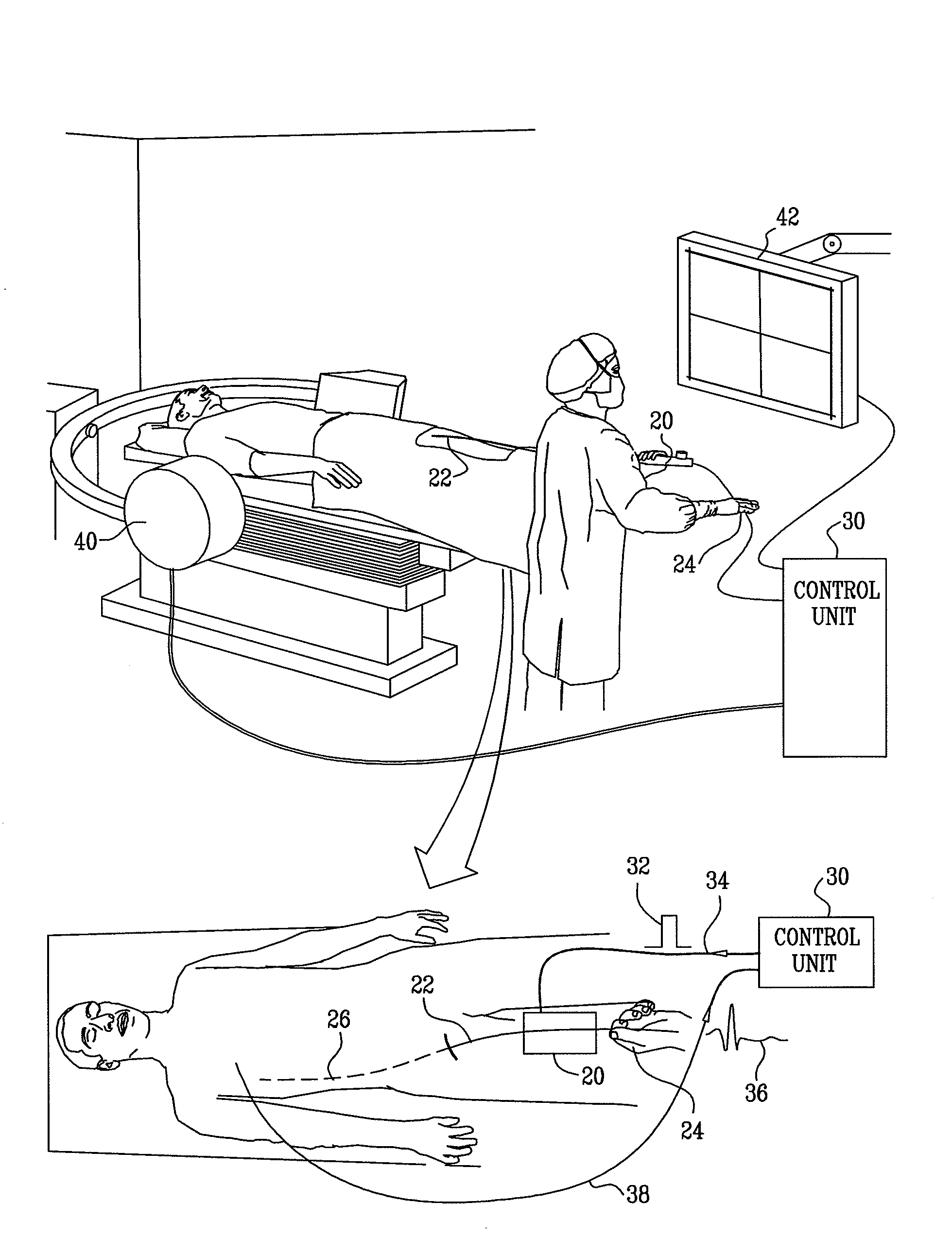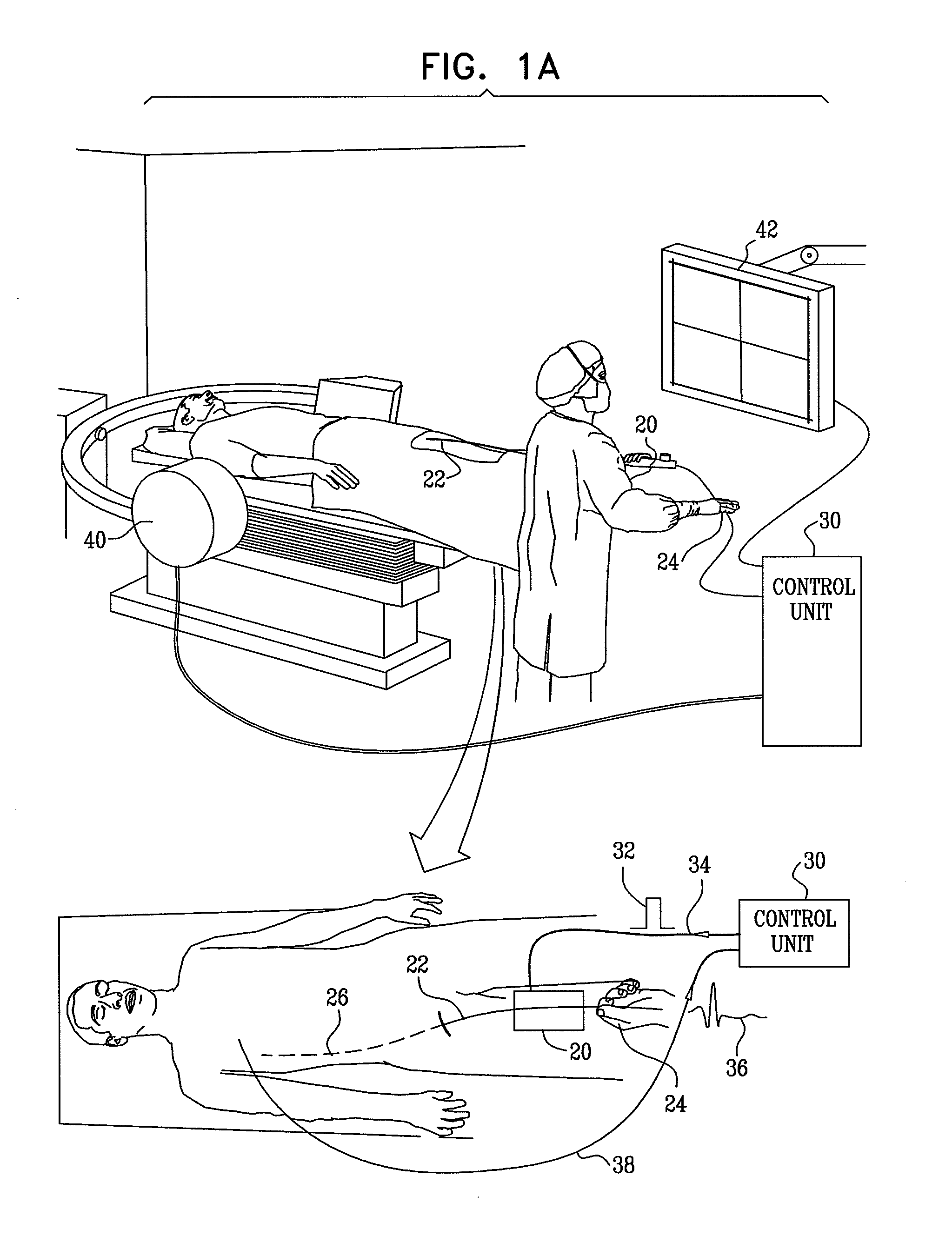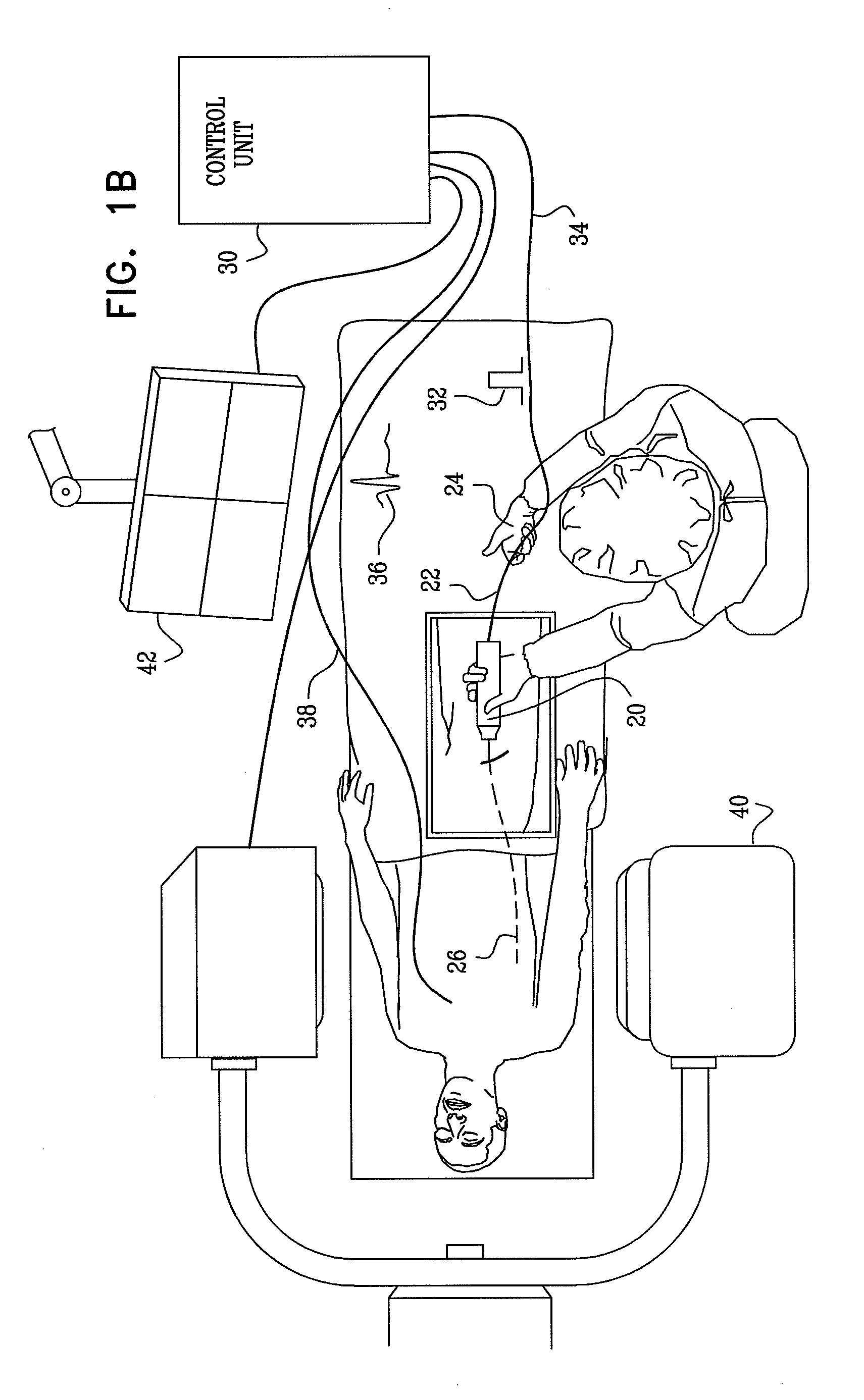Stepwise advancement of a medical tool
- Summary
- Abstract
- Description
- Claims
- Application Information
AI Technical Summary
Benefits of technology
Problems solved by technology
Method used
Image
Examples
Embodiment Construction
[0088]Reference is now made to FIGS. 1A and 1B, which are schematic illustrations of respective views of a guide wire motion modulator 20 being used by a physician, in accordance with an embodiment of the invention. In an embodiment, a tool such as a guide wire 22 is advanced by the physician's hand 24 within arterial system 26 of the patient. The actual forward motion of guide wire 22 is modulated by guide wire motion modulator 20. Guide wire motion modulator 20 receives, from control unit 30, a synchronization signal 32 over a line 34. Control unit 30 derives synchronization signal 32 from an ECG signal 36 of the patient, which is received via a line 38. In an embodiment, the guide wire motion modulator is used for advancing a coronary guide wire. Images of the advancement of guide wire 22 within arterial system 26 of the patient are typically generated by a fluoroscopy system 40 and displayed on a monitor 42. In some embodiments, guide wire 22 is inserted into arterial system 26 ...
PUM
 Login to View More
Login to View More Abstract
Description
Claims
Application Information
 Login to View More
Login to View More - R&D
- Intellectual Property
- Life Sciences
- Materials
- Tech Scout
- Unparalleled Data Quality
- Higher Quality Content
- 60% Fewer Hallucinations
Browse by: Latest US Patents, China's latest patents, Technical Efficacy Thesaurus, Application Domain, Technology Topic, Popular Technical Reports.
© 2025 PatSnap. All rights reserved.Legal|Privacy policy|Modern Slavery Act Transparency Statement|Sitemap|About US| Contact US: help@patsnap.com



